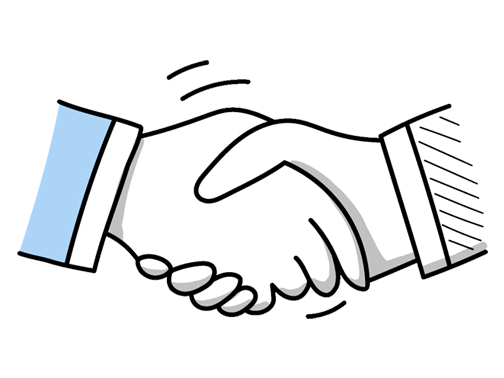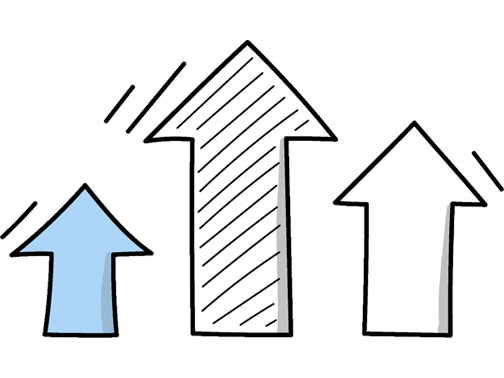Supply Chain Director Interview Questions (2025 Guide)
Find out common Supply Chain Director questions, how to answer, and tips for your next job interview
Practice Interviews Online - Identify your strengths and weakness in a realistic Supply Chain Director mock interview, under 10 minutes
Practice Now »Supply Chain Director Interview Questions
Hiring managers ask this question to understand how you integrate technology to improve efficiency and drive innovation in supply chain strategies. You need to explain how you leverage technology to analyze data, optimize operations, and support long-term goals.
Example: Technology is central to shaping our supply chain strategy. It enables real-time data analysis, improving decision-making and forecasting. For example, integrating AI-driven demand forecasting helped us reduce waste and optimize inventory. By leveraging digital tools, we stay agile, respond quickly to disruptions, and align operations with broader business goals, ensuring both efficiency and resilience in an ever-changing market.
Interviewers ask this to assess your leadership skills and ability to foster collaboration among different backgrounds. You need to describe a specific situation where you united team members with diverse perspectives and achieved a common goal efficiently.
Example: In my previous role, I led a team across different regions and cultures. I focused on open communication and understanding individual strengths, which helped us align goals smoothly. By encouraging collaboration and respecting diverse perspectives, we improved our supply chain efficiency and morale. It was rewarding to see how embracing diversity not only solved challenges but also sparked innovation within the team.
Interviewers ask this question to see how you lead and inspire your team to achieve consistent results aligned with company goals. You need to say you set clear, measurable objectives tied to the company strategy, foster a positive environment by recognizing achievements, and support growth through training and career development plans.
Example: I focus on setting clear goals that everyone understands and feels connected to. Celebrating small wins and openly appreciating efforts keeps spirits high. I also prioritize regular check-ins to support growth and address any hurdles early. For example, when one team struggled with a new system, we organized tailored training that not only boosted skills but also confidence, which made a real difference in both motivation and output.
Interviewers ask this to see how you approach complex planning and align supply chain goals with business strategy. You need to explain the situation, your analysis of challenges and opportunities, and how you designed and implemented a strategic plan that delivered measurable results.
Example: In a previous role, I led a team to redesign our supply chain to improve resilience against disruptions. We analysed risk factors, diversified suppliers across regions, and invested in technology for better visibility. This approach not only reduced lead times but also cut costs over several years, positioning the company to adapt smoothly as market conditions evolved. It was about balancing efficiency with flexibility for sustainable growth.
Questions like this assess your ability to ensure supply chain decisions support broader company goals. You need to explain how you analyze business objectives and translate them into specific supply chain initiatives that drive growth and efficiency.
Example: Aligning supply chain strategies with business goals starts by understanding the company’s vision deeply. I focus on collaborating closely with other departments to ensure our operations support growth, customer satisfaction, and profitability. For example, when market demand shifts, we adjust sourcing and logistics quickly to maintain service levels without increasing costs. It’s about keeping supply chain decisions aligned with the bigger picture in a practical, responsive way.
Employers ask this question to see if you can measure results and adapt strategies for better performance. You need to explain the key metrics you track, like cost, delivery time, and customer satisfaction, and how you use data to make continuous improvements.
Example: I look at key performance indicators like delivery times, cost efficiency, and inventory levels to see if we're meeting our goals. Beyond the numbers, I engage with teams and partners to understand any challenges or opportunities. For example, when we reduced lead times by collaborating more closely with suppliers, it boosted customer satisfaction and lowered costs. It's about balancing data with real-world feedback to keep the strategy aligned and effective.
Questions like this assess your ability to identify inefficiencies and drive measurable improvements in the supply chain. You need to clearly describe the problem, the solution you implemented, and the specific cost savings that resulted from your actions.
Example: In a previous role, we noticed delays in supplier deliveries were driving up holding costs. I led a cross-functional team to streamline communication and introduced just-in-time inventory practices. This reduced stock levels by 20% and cut storage expenses by £150,000 annually, while improving overall responsiveness. It was a straightforward change that made a significant financial impact and boosted operational efficiency.
Interviewers ask this question to understand how you proactively identify and manage potential supply chain risks to minimize disruptions. In your answer, clearly mention the specific tools or methods you use, like risk matrices or workshops, and explain how these assessments guide your strategic decisions, such as altering supplier choices.
Example: When assessing risks in the supply chain, I rely on tools like risk matrices and software such as SAP Risk Management to map vulnerabilities. The process starts with identifying potential disruptions, then evaluating their impact and likelihood. These insights shape our strategies—whether that means diversifying suppliers or adjusting inventory levels—to ensure resilience and keep the supply chain agile in a changing environment.
This question evaluates your approach to talent management and ensuring your team grows to meet evolving business needs. You need to explain how you identify skill gaps through regular assessments and provide targeted development opportunities like training or mentorship.
Example: I start by understanding each team member’s strengths and growth areas through regular one-to-ones and observing their work on varied projects. From there, I tailor development opportunities, whether it’s mentoring, training, or stretch assignments. For example, when I noticed a planner’s analytical skills needed sharpening, I arranged targeted workshops and gave them a lead role on forecasting, which boosted their confidence and the team’s performance.
What they want to understand is how you proactively manage and enforce compliance within complex supply chains to avoid risks and legal issues. You need to explain that you implement structured audit processes, conduct thorough risk assessments, and lead collaboration across teams to ensure all operations consistently meet regulatory standards.
Example: In my experience, keeping our supply chain compliant starts with clear, well-defined processes that everyone understands and follows. I stay proactive by regularly reviewing risks and working closely with legal and operations teams to address any gaps. For example, in my previous role, collaborating across departments helped us quickly adapt to new UK import regulations, ensuring smooth operations without interruptions. Consistent communication and teamwork make all the difference.
This question evaluates your strategic thinking in preparing supply chain operations for growth and adaptability. You need to explain how you assessed current workflows for scalability, implemented flexible technologies or automation, and used key performance metrics to continuously improve efficiency during expansion.
Example: To ensure scalability in supply chain operations, I start by evaluating existing workflows to spot growth opportunities. I’ve introduced adaptable tech solutions, like modular inventory systems, which expand smoothly as demand increases. Tracking key performance metrics allows the team to make informed adjustments quickly. For example, when sales surged, these measures helped us double capacity without compromising delivery times or costs.
Hiring managers ask this question to see how you maintain clear, consistent communication that ensures everyone is aligned and informed across teams. You need to explain that you proactively schedule regular meetings, encourage open feedback through forums, and use standardized reporting to prevent misunderstandings.
Example: I make it a priority to keep everyone in the loop by sharing updates clearly and regularly. I encourage open conversations and listen closely to feedback, creating an environment where people feel comfortable speaking up. When misunderstandings arise, I address them promptly by clarifying expectations and finding common ground. For example, in my last role, setting up weekly cross-department check-ins helped us avoid delays and keep projects on track.
This question helps interviewers understand how you manage interpersonal challenges and maintain team cohesion under pressure. You need to explain that you listen actively to all viewpoints, stay calm and unbiased during conflicts, and implement practical solutions that enhance collaboration and team dynamics.
Example: When conflicts arise, I make it a point to listen carefully to everyone’s viewpoint without rushing to conclusions. Staying composed helps me guide the conversation toward common ground. In one case, I helped two team members collaborate by identifying shared goals and adjusting responsibilities, which not only resolved the issue but also strengthened teamwork. Finding practical solutions that benefit the group keeps the team moving forward smoothly.
This question assesses your ability to communicate effectively and manage collaboration across diverse teams, ensuring smooth execution of supply chain initiatives. You need to explain that you use regular updates, clear communication channels, and stakeholder meetings to keep everyone informed and aligned.
Example: Keeping everyone in the loop starts with clear, regular communication tailored to each stakeholder. I host brief, focused updates where we discuss progress and challenges openly. For example, during a recent logistics overhaul, I created cross-functional workshops which helped us address concerns early and keep the team moving forward together. It’s about building trust and ensuring everyone understands how their role impacts the bigger picture.
Hiring managers ask this question to assess how you apply data-driven methods and collaboration to anticipate demand and coordinate supply chain activities effectively. You need to explain that you use historical data and trend analysis to forecast demand accurately, align supply planning with business goals, and collaborate with sales, marketing, and operations teams to ensure cohesive planning.
Example: When forecasting demand, I combine historical data analysis with market trends to create reliable projections. I ensure supply chain plans support wider business goals by regularly collaborating with sales, marketing, and operations teams. For example, at my previous role, working closely with these teams helped us adjust quickly to seasonal shifts, reducing stockouts and improving customer satisfaction. This cross-functional approach keeps the supply chain agile and aligned.
Interviewers ask this to see how well you manage crucial external relationships that impact the supply chain’s efficiency and reliability. You need to explain that you maintain clear, consistent communication channels and build trust through transparency, while also giving an example of how you resolved a conflict to strengthen the partnership.
Example: I believe clear, open communication is key when working with suppliers. I make it a priority to understand their challenges and keep dialogue transparent, which helps build trust. When issues arise, I focus on finding solutions together rather than assigning blame. For example, in a previous role, this approach helped us navigate a supply delay smoothly, maintaining strong relationships and meeting our delivery goals.
Questions like this assess your leadership and change management skills under pressure. You need to clearly explain the situation, your role in guiding the team, the actions you took to manage the change, and the positive outcome achieved.
Example: In a previous role, we shifted to a new supplier management system that initially disrupted workflows. I focused on clear communication and hands-on support, involving the team in troubleshooting and feedback. This approach not only eased the transition but also boosted engagement. By addressing concerns directly and celebrating small wins, we improved efficiency and strengthened collaboration throughout the change.
Questions like this assess your ability to work cross-functionally and drive results through teamwork. You need to clearly describe a specific example where you collaborated with another department, explain your role in the process, and quantify the positive impact your joint efforts achieved.
Example: In a previous role, I worked closely with the sales team to streamline demand forecasting. By aligning inventory planning with their insights, we reduced stockouts by 20% and improved delivery times. I facilitated regular communication and shared data transparently, which built trust and ensured everyone was working toward the same goal. This collaboration not only boosted customer satisfaction but also cut carrying costs significantly.
This question assesses your problem-solving skills and ability to maintain operations under pressure. You need to explain the disruption, the actions you took to resolve it, and the positive outcome that ensured supply chain continuity.
Example: Certainly. In a previous role, we faced a sudden supplier shutdown that threatened production. I quickly coordinated alternative sources and adjusted delivery schedules, keeping communication transparent with our teams and customers. By staying calm and focused, we minimized downtime and maintained service levels, turning a potential crisis into a demonstration of our team’s resilience and adaptability.
Questions like this assess your ability to proactively identify and manage risks that could disrupt the supply chain. You need to explain how you evaluate supplier risks through audits, implement mitigation strategies like contingency plans, and maintain ongoing communication and performance reviews to ensure reliability.
Example: When managing supplier risk, I start by thoroughly evaluating potential vulnerabilities, such as financial stability or delivery delays. I work closely with suppliers to build reliable partnerships and put contingency plans in place—like identifying alternative sources. Keeping an open line of communication helps me stay ahead of any issues. For example, regular check-ins allowed us to spot and resolve a supply delay before it impacted production.
This interview question is designed to assess your understanding of key performance indicators that drive efficiency and effectiveness in supply chain operations. You need to mention metrics like on-time delivery, inventory turnover, order accuracy, and cost per unit, showing you focus on both operational performance and cost management.
Example: When measuring supply chain performance, I focus on key indicators like order accuracy, delivery lead times, and inventory turnover. Monitoring these helps ensure efficiency and customer satisfaction. For example, tracking on-time delivery rates highlights potential delays, while inventory turnover reveals if stock levels align with demand. Balancing cost with service quality is crucial to maintaining a responsive, reliable supply chain.
What they want to understand is how you create teamwork and trust to improve performance and solve problems. You should explain that you promote open communication through regular meetings, build trust by aligning shared goals and recognizing achievements, and handle conflicts by focusing on common objectives to find solutions.
Example: Creating a collaborative environment starts with clear, honest communication, where everyone feels their voice matters. I encourage open dialogue and actively listen to different perspectives to build trust. When disagreements arise, I focus on understanding the root cause and guiding the team towards solutions that benefit all. For example, in my last role, this approach helped reduce project delays by fostering stronger teamwork and shared accountability.
What they want to understand is how you identify potential disruptions and proactively address them to keep operations running smoothly. You need to say that you analyze supplier reliability, monitor market trends, and implement contingency plans to minimize impact.
Example: When assessing risks, I start by mapping the entire supply chain to identify vulnerabilities, whether it’s supplier reliability or logistical challenges. Mitigation involves building strong relationships, diversifying sources, and maintaining clear communication. For example, during recent disruptions, having multiple suppliers allowed us to pivot quickly, ensuring continuity. It’s about being proactive and adaptable, rather than just reacting when issues arise.
Questions like this assess your ability to balance cost efficiency with meeting demand to avoid stockouts or excess inventory. Explain that you use data analysis and forecasting to align inventory with demand, while continuously reviewing and adjusting safety stock and reorder points.
Example: To optimize inventory, I focus on aligning stock with real-time demand patterns, using data-driven forecasts to avoid overstock and shortages. I also encourage close collaboration with suppliers to improve lead times and flexibility. For example, in my previous role, refining reorder points and implementing regular reviews helped reduce excess inventory by 15%, boosting cash flow without risking customer service levels.
Employers ask this to see how you approach optimizing complex systems and improving operational performance. You should explain that you analyze data to identify bottlenecks, implement targeted solutions like automation, and continuously measure results with KPIs to ensure sustained efficiency gains.
Example: When spotting inefficiencies, I start by diving into the data and talking with teams to understand where delays or costs build up. Then, I focus on practical tweaks—whether that’s streamlining workflows or renegotiating supplier terms—that address those pain points. After implementing changes, I track key metrics closely to ensure improvements stick and adjust as needed. For example, at my last role, this approach cut lead times by 15% within six months.
Ace your next Supply Chain Director interview with even more questions and answers
Common Interview Questions To Expect
The interviewer is looking for a candidate to demonstrate their understanding of the role, company, and industry. They want to see how the candidate's skills and experience align with the responsibilities of the position.
Example: I am interested in this role because I have a strong background in supply chain management and I am excited about the opportunity to lead a team in optimizing the company's logistics operations. I believe my experience in streamlining processes and reducing costs aligns well with the goals of this position. Additionally, I am passionate about the industry and eager to contribute to the company's success.
The interviewer is looking for examples of problem-solving skills, conflict resolution abilities, and how you handle challenges in the workplace. Answers should demonstrate your ability to overcome obstacles and work effectively under pressure.
Example: Sure! One challenge I faced was when there was a delay in receiving a critical shipment, which impacted our production schedule. I quickly communicated with the supplier to understand the issue and worked with our team to come up with a contingency plan to minimize the impact on our operations. By staying proactive and collaborative, we were able to find a solution and keep things running smoothly.
The interviewer is looking for your long-term career goals, ambition, and commitment to the company. Answers should demonstrate a desire for growth and development within the organization.
Example: In five years, I see myself continuing to grow and develop within the company, taking on more responsibilities and leadership roles in the supply chain department. I am committed to contributing to the company's success and achieving my career goals within the organization. I am excited about the opportunities for advancement and look forward to making a positive impact on the company's supply chain operations.
The interviewer is looking for insight into your long-term career aspirations, your motivation, and how this role fits into your overall career plan. Be honest and specific about your goals and how they align with the company's objectives.
Example: My career goal is to continue growing and advancing in the supply chain field, eventually reaching a senior leadership position within a global organization. I am motivated by the opportunity to drive efficiency, cost savings, and innovation in supply chain operations. I believe that this role as Supply Chain Director at your company aligns perfectly with my goals and will allow me to make a significant impact.
The interviewer is looking for insight into your personal values, work ethic, and what drives you to succeed. Answers should demonstrate passion, dedication, and alignment with the company's goals.
Example: What motivates me is the opportunity to make a positive impact on the company's supply chain operations. I am driven by the challenge of optimizing processes and driving efficiency. Ultimately, seeing tangible results and contributing to the company's success is what keeps me motivated.
Company Research Tips
The company's official website is a goldmine of information. Look for details about the company's history, mission, vision, and values. Pay special attention to the 'About Us', 'Our Team', and 'News' sections. These can provide insights into the company's culture, key personnel, and recent developments. For the role of Supply Chain Director, focus on any information related to the company's supply chain operations, logistics, and procurement processes.
Tip: Look for any recent news or press releases related to the company's supply chain. This can give you insights into their current challenges and future plans.
LinkedIn can provide valuable insights into the company's structure, key employees, and recent updates. Look at the profiles of people who work in the same or similar roles to the one you're applying for. This can give you an idea of the skills and experience the company values. For the Supply Chain Director role, look at the profiles of people in supply chain, logistics, or procurement roles.
Tip: Follow the company on LinkedIn to stay updated with their latest news and updates. Also, join relevant groups to gain industry insights.
Industry reports and analysis can provide a broader context of the market in which the company operates. This can help you understand the company's position in the market, its competitors, and the challenges it may be facing. For the role of Supply Chain Director, look for reports related to the supply chain and logistics industry in the UK.
Tip: Use resources like Statista, IBISWorld, or industry-specific publications to find relevant reports and analysis.
Glassdoor provides insights into the company's culture, salary ranges, and interview processes from the perspective of current and former employees. This can give you a sense of what it's like to work at the company. For the role of Supply Chain Director, look for reviews from people in similar roles or departments.
Tip: Take the reviews with a grain of salt as they are subjective and may not represent the overall company culture.
What to wear to an Supply Chain Director interview
- Dark-colored business suit
- White or light-colored dress shirt
- Conservative tie, avoid flashy patterns
- Polished dress shoes, preferably black
- Minimal and professional accessories
- Clean, well-groomed appearance
- Avoid strong perfumes or colognes
- Carry a professional briefcase or portfolio





